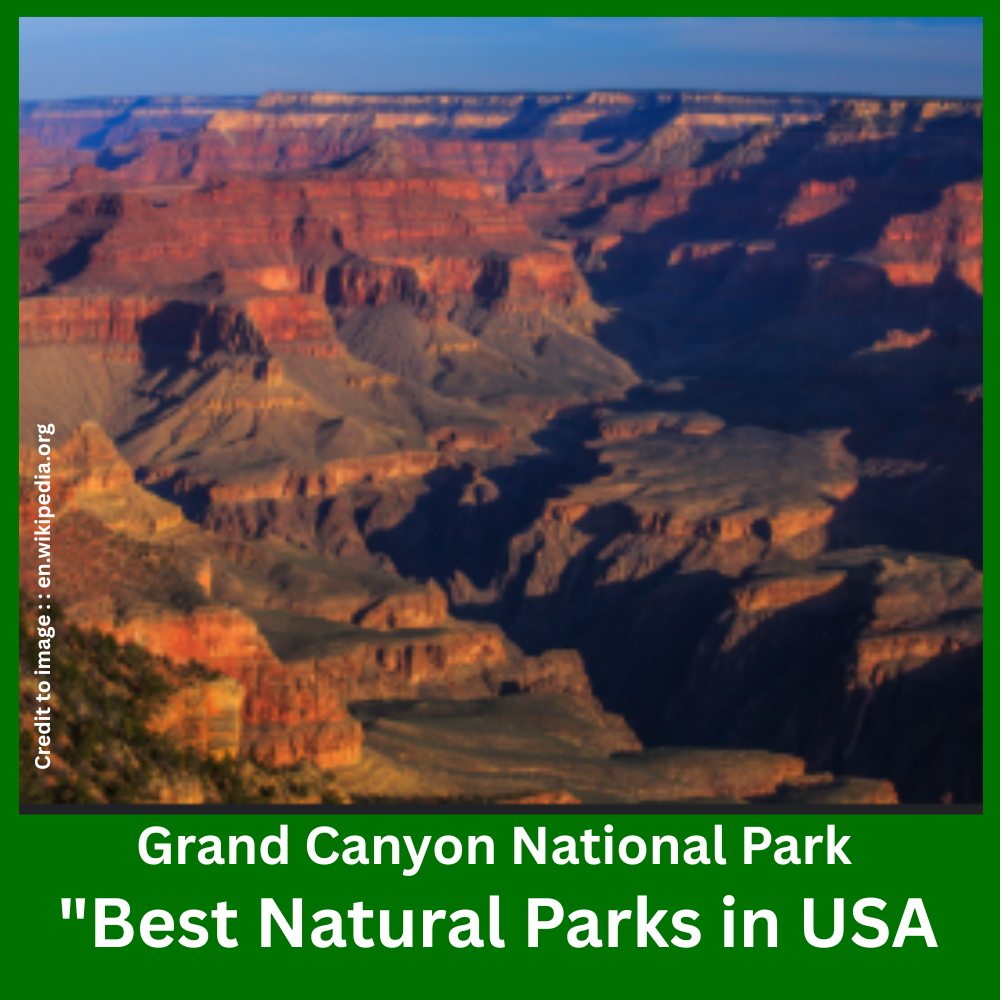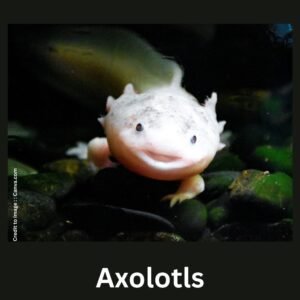Natural parks in the United States are more than scenic wonders; they are living laboratories of biodiversity, protectors of ecosystems, and cultural heritage sites. From the majestic Yellowstone National Park to the vibrant biodiversity of the Everglades, these parks preserve landscapes while supporting the United Nations Sustainable Development Goals (SDGs). This article explores the “Best Natural Parks in USA” , their geographical conditions, role in biodiversity, comparative significance, visitor responsibilities (Do’s & Don’ts), and how they contribute to global sustainability.
Table of Contents
- Introduction
- Top Natural Parks in USA
- Scientific Data Table of Major Parks
- Comparative Data: National Parks in USA
- Geographical Conditions of Key Parks
- Role of Natural Parks in Biodiversity
- Natural Parks in USA and the Sustainable Development Goals (SDGs) of UN
- Do’s and Don’ts in National Parks
- Related Searchable Topics by Public
- Summary
- Conclusion
- FAQs
- References
- Call for Global Support: Prakriti Darshan
1. Introduction
The United States is home to over 400 protected natural sites, all are managed by the National Park Service (NPS) USA. Among them, more than 60 designated national parks stand as symbols of environmental conservation. These parks are not only tourist destinations but also ecosystems that regulate climate, safeguard water, protect species, and offer sustainable livelihoods through eco-tourism.
2. Top Natural Parks in USA
- Yellowstone National Park (Wyoming, Montana, Idaho)
- Grand Canyon National Park (Arizona)
- Yosemite National Park (California)
- Everglades National Park (Florida)
- Great Smoky Mountains National Park (Tennessee/North Carolina)
- Rocky Mountain National Park (Colorado)
- Denali National Park (Alaska)
3. Scientific Data Table of Major Parks
| National Park | Established | Area (sq. km) | Annual Visitors (2023) | Major Biodiversity |
| Yellowstone | 1872 | 8,983 | 3.3 million | Grizzly bear, gray wolf, geothermal ecosystems |
| Grand Canyon | 1919 | 4,926 | 4.7 million | 1,500+ plant species, desert bighorn sheep |
| Everglades | 1947 | 6,106 | 1.1 million | American crocodile, Florida panther, mangroves |
| Yosemite | 1890 | 3,027 | 3.6 million | Giant sequoias, black bear, Sierra Nevada ecosystem |
4. Comparative Data Table: Natural Parks in USA
| Criteria | Yellowstone | Grand Canyon | Everglades | Yosemite |
| Geology | Geothermal features, hot springs | Deep canyon carved by Colorado River | Wetlands & mangroves | Granite cliffs, waterfalls |
| Climate | Cold temperate | Desert | Subtropical | Alpine & Mediterranean |
| UNESCO Status | Recognized World Heritage Site | Recognized World Heritage Site | Recognized World Heritage Site | Recognized World Heritage Site |
| Main Attraction of Yellowstone park are : | Old Faithful geyser of Yellowstone park | Canyon vistas | Wetlands biodiversity | El Capitan, Half Dome |
5. Geographical Conditions of Key Parks
- Yellowstone: High-altitude plateau, geothermal activity, volcanic caldera.
- Grand Canyon: Arid desert, steep cliffs shaped by Colorado River erosion.
- Everglades: Subtropical wetlands, mangrove forests, estuarine ecosystems.
- Yosemite: A breathtaking Sierra Nevada landscape, shaped by towering granite cliffs, ancient glaciers, and alpine wilderness.
6. Role of Natural Parks in Biodiversity
- Provide habitats for endangered species.
- Maintain genetic diversity across ecosystems.
- Support pollination and seed dispersal.
- Act as climate buffers through carbon sequestration.
7. Natural Parks and the UN SDGs
- SDG 13 (Climate Action): Parks absorb CO₂ ,regulate climate and maintain biodiversity .Natural parks are playing a vital role to reduce the Climate change effects .
- SDG 14 (Life Below Water): Everglades protect aquatic ecosystems.
- SDG 15 (Life on Land): Habitat protection for species like wolves, panthers, and sequoias and also creating healthy climate and biodiversity , sustainable future for all.
- SDG 3 (Good Health): Promote eco-tourism and mental well-being.
- SDG 8 (Decent Work): Generate local employment via sustainable tourism.
8. Do’s and Don’ts in National Parks
| Do’s | Don’ts |
| Stay on marked trails | Do not litter |
| Respect wildlife, observe from distance | Do not feed animals |
| Carry reusable bottles & eco-gear | Avoid plastic disposables |
| Follow park guidelines & rangers’ advice | No unauthorized camping or fire |
| Support local eco-tourism | Do not disturb natural habitats |
9. Related Searchable Topics
- Best hiking trails in US national parks
- Most visited national parks in USA
- Rare species found in American parks
- History of Yellowstone and Yosemite
- Eco-tourism and climate change mitigation
10. Summary
Natural parks in the USA are pillars of conservation. They blend tourism with environmental education, protect endangered species, and support global sustainability. Understanding their ecological roles ensures responsible visitation and stronger global climate action.
11. Conclusion
The best natural parks in the USA are more than scenic wonders; they are guardians of life. Preserving Natural Parks is essential for the survival of wildlife and to maintain the balance of ecosystems. Their role in meeting SDGs highlights their global significance. Active participation from tourists, researchers, and policymakers is crucial.
12. FAQs
Q1. What is the oldest national park in the USA?
A1. Yellowstone, established in 1872.
Q2. Which US park has the most visitors?
A2. US Park “Great Smoky Mountains” has the most visitors. Approx. 12 million visitors every year .
Q3. Which park is best for wildlife photography?
A3. Yellowstone and Everglades are top choices.
Q4. Are all US national parks UNESCO sites?
A4. No, but several including Grand Canyon and Yosemite are.
Q5. Which park is ideal for trekking?
A5. Yosemite and Rocky Mountain are top trekking destinations.
Q6. What is unique about Everglades National Park?
A6. It’s the largest subtropical wetland ecosystem in the US.
Q7. Which park has geothermal features?
A7. Yellowstone.
Q8. Which park is most endangered by climate change?
A8. Everglades, due to rising sea levels.
Q9. Write about the important role of US parks in climate regulation?
A9. US Natural parks play the following important role in climate regulations i.e. carbon sinks and prevent land degradation.
FAQs
Q10. Which park has the tallest trees?
A10. Yosemite (Giant Sequoias).
Q11. Do US parks contribute to the economy?
A11. Yes, generating billions in eco-tourism annually.
Q12. Are pets allowed in US parks?
A12. Yes, but only in designated areas.
Q13. Which park is best for stargazing?
A13. Grand Canyon and Bryce Canyon.
Q14. How many US parks are there in total?
A14. More than 60 national parks, with 400+ protected areas are available in USA.
13. References
- National Park Service (NPS), USA.
- UNESCO World Heritage Centre.
- International Union for Conservation of Nature (IUCN).
- U.S. Geological Survey (USGS) reports on biodiversity.
- UN Sustainable Development Goals official website.
14. Call for Global Support: Prakriti Darshan
At Prakriti Darshan, we are committed to spreading environmental awareness worldwide through free distribution of our magazine and scholarly research in our journal www.prakritidarshanjournal.com.
🌍 You can support us by:
- Becoming a sponsor or member.
- Advertising in our eco-conscious platform.
- Providing voluntary funding for campaigns & free magazine circulation worldwide.
Together, we can build a sustainable future where awareness leads to action.
PRAKRITI DARSHAN-NATURE AND ENVIRONMENT MAGAZINE
Prakriti Darshan is a leading Hindi-language magazine and digital platform dedicated to raising public awareness on vital issues related to nature, biodiversity, climate change, sustainable development, and environmental conservation. This magazine represents a unique blend of science, society, and sensitivity—offering a common platform for researchers, students, NGOs, policymakers, nature lovers, and conscious citizens alike.
With thought-provoking articles, inspiring stories, environmental research, impactful projects, and policy perspectives, Prakriti Darshan is a transformative journey toward a greener and more sustainable future.
Let us come together to protect and preserve our planet for generations to come. 🌿🌍
Join us in our mission to protect and celebrate the planet. 🌏💚
Click for more information
- Visit www.prakritidarshan.com for Free Magazine ,Free membership benefits ,offered price magazine @ Rs.1 or Rs.11 only and more ……
- 🎗️Sponsor Prakriti Darshan Magazine – Support our environment mission.
- 📚 Explore the Environment Magazine – Read our latest and past issues.
- ✍️ Read Editor’s Article or Blog – Insightful thoughts from our editorial desk.
- 🌱 Join Membership – Be part of India’s leading green community.
- 🤝 Become an NGO Impact Story Partner – Share your grassroots impact nationwide.
- 🏢 Become a Company Partner – Showcase your CSR, ESG, or sustainability work.
- 👤 Become an Individual Partner – Volunteer, write, and raise your green voice.
- 📢 Advertise with Us – Reach eco-conscious readers across India.
- Eco Trails Newsletter
- Donate for “Hari Ho Vashundhara & Har school Hariyali “ Plantation campaign Associated Partner NGO :GDSS NGO www.gdssngo.org
BALA DATT SHARMA,
MANAGING EDITOR ,
PRAKRITI DARSHAN-NATURE AND ENVIRONMENT MAGAZINE
- Drake Passage: The World’s Roughest Sea Route Between Atlantic and Pacific Oceans - August 22, 2025
- Top 10 Natural Parks in the USA: Biodiversity, Geography & Global Relevance - August 21, 2025
- Exploring the Best Natural Parks in USA: Biodiversity, Sustainable Tourism, and Role in SDGs - August 21, 2025







